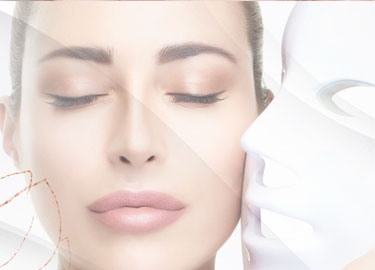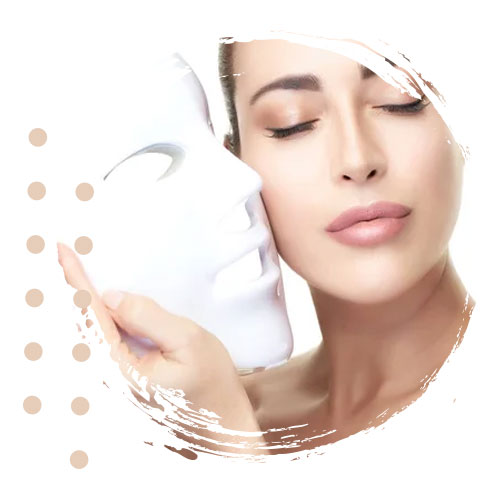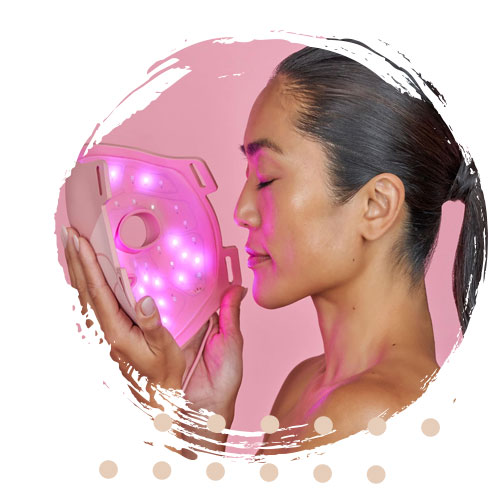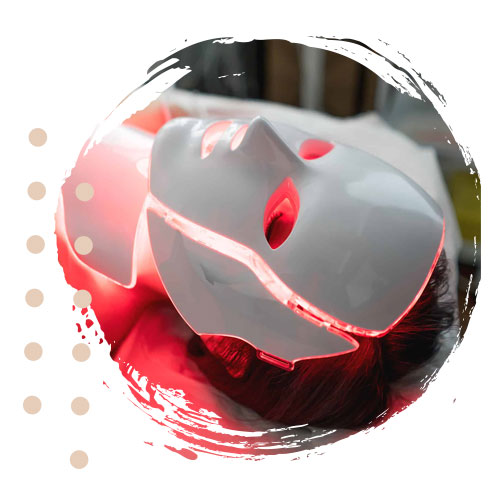ROSHA CLINIC SERVICES
LED Skin Photography
LED Skin Photography

What is LED Skin Photography?
LED therapy, or phototherapy, is a treatment that applies variant wavelengths of light, such as blue and red. Each of these two lights is stronger in one attribute and is used for a specific purpose.
LED stands for Light Emitting Diode, and was originally used and developed by NASA to stuff like plant growth, but after a while, the power of phototherapy to heal wounds was realized. Phototherapy was originally known to increase the production of collagen and fibrous tissues to have young and smooth skin. Following this claim, many cosmetologists used LED therapy to improve the appearance of the skin and reduce the effects of skin aging factors. Many also utilize LED therapy to improve the condition of skin acne. In fact, the red frequency is applied for anti-aging and the blue frequency is used to treat acne.
The light used in phototherapy does not include ultraviolet rays, so this type of phototherapy is a safer method. Also, skin color does not limit light therapy and everyone with any skin color can perform this treatment. Phototherapy is common for the most vulnerable facial skin, but it can be applied nearly to the whole body skin.


Therapeutic goals of LED therapy
In general, treating acne, reducing skin inflammation, and combating the effects of aging are general goals of LED therapy. Reducing skin wrinkles and rejuvenating the skin also fall into this category.
How LED therapy works
The frequency of red and infrared light in LED therapy targets the outermost layer of the skin and is absorbed by this layer to stimulate the production of collagen protein. For red frequency, this application is also thought to reduce inflammation and increase the health of the skin by increasing blood circulation.
Blue light targets the sebaceous glands under the hair follicles in phototherapy. The sebaceous glands of the hair produce the fat needed to soften the skin, but when combined with dead cells and closing the pores of the skin, they can lead to pimples and acne. In phototherapy, the blue frequency also affects these glands and reduces their activity. But in addition, the blue frequency can eliminate the accumulation of pimple-producing bacteria under the skin, and this in itself can prevent severe pimples such as cysts and nodules.
Blue and red frequencies are sometimes used together in phototherapy to treat acne, heal wounds, and enhance each other’s anti-inflammatory properties.
Complications of LED therapy
Because LED therapy is a non-invasive treatment, it has a short recovery period but this type of treatment in some cases may include temporary side effects such as the following:
– Redness of the skin
– Inflammation
– Itching
– allergy
– Urticaria
– the pain
Depending on patient skin type and body immune system these side effects disappear in a short period of time.

What you are waiting for?
If you have any questions right now you can contact us to find answers. If you want to make an appointment, book now!
